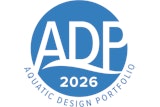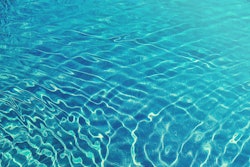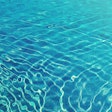Borrowing Ideas from Outdoor Water Parks Helps Put the "Leisure" in Indoor Leisure Pools

At the bottom of the world resides one of the finest examples of how to integrate a multilevel leisure pool concept into a natural rock and vegetation environment. Hanmer Springs Thermal Reserve in New Zealand, 90 miles north of Christchurch, has been harmonizing with nature in one form or another since 1859. The hot springs facility, through two major expansions, has been transformed from a series of drab rectangular and hexagonal pools to several interconnected rock pools on varying levels, followed by the addition of a free-form family activity pool and two water slides.
All told, Hanmer Springs boasts seven open-air thermal pools, three sulfur pools, sauna and steam suites with a plunge pool, a heated freshwater pool, a waterfall, and a large family activity pool with two water slides and interactive play features - all nestled in a natural Alpine setting surrounded by rocks, towering sequoias and a picturesque mountain backdrop. It's no wonder the facility, a major destination point for visitors located on government reserve land and owned by a local government district, was a finalist in New Zealand's 1999 and 2000 Tourism Awards.
While the Hanmer Springs waterpark paradise may be a bit more elaborate than most outdoor facilities - and certainly more so than any indoor leisure pool - it illustrates just how integral the concept of theming can be to sprucing up the appearance of traditional pools. Theming is the art of using design elements to transform a pool environment into an imaginative and welcoming space. A well-developed theme can provide visitors with more than a trip to the pool, thus attracting a new breed of patrons more interested in leisure and recreation than in actually swimming. They can float in a tropical lagoon or woodland stream, board a pirate ship or learn more about the history of their community.
Theming has become a major element of the outdoor waterpark industry, as private enterprise quickly realized its potential years ago. In the United States alone, there are 950 municipal and for-profit outdoor waterparks, according to the World Waterpark Association - including many popular themed facilities like Noah's Ark in Wisconsin Dells, Wis., and Disney's Blizzard Beach in Orlando, Fla. Blizzard Beach designers even dreamed up fictional stories around which the water attractions are based, lending a sense of purpose and intrigue to each slide and pool area.
For the most part, though, publicly funded waterparks and indoor leisure pools in North America have been relatively slow to respond to the theming concept, restrained by limited funding and a rather dated mentality that can't seem to shake the traditional swimming pool mind-set.
It wasn't always that way. When the leisure pool craze reached North American shores more than two decades ago, enthusiasm initially ran high, until the reality of developing a creative leisure environment set in. As a result, many facilities continued to incorporate "cookie-cutter" pools that lacked energy and distinction.
In the same way that cast-iron building facades were designed and assembled from mass-produced materials in the 19th century, so too were many indoor leisure pools that were conceived in the last decade of the 20th century. Standard components, typically made of stainless steel or fiberglass and available predominantly in a range of gaudy primary colors, are still aimed mainly at the lucrative outdoor waterpark market.
But some of these items nevertheless found their way quickly into indoor pool environments, as designers eager to provide more variety looked for an easy fix that didn't always work so well. For example, the water slides and play structures used by many indoor facilities are scaled primarily for outdoor use, and those elements often end up dominating the limited confines of an indoor space.
That said, several architects and aquatic consultants have taken to heart the challenges of abandoning the status quo and designing effective indoor leisure pools that boast both personality and flair not only within the building envelope but throughout its design and surrounding features - from the body of water itself to the snack bar in the lobby.
Perhaps no element of leisure pools poses a greater challenge to designers of indoor facilities than the water slide. A relatively simple solution to the problem of scale is constructing the bulk of the water slide in an enclosed tube that travels outside the building. Riders enter and exit the slide from the inside but travel a wild and woolly path outdoors via the tube. Not only will users get a longer ride than if the entire slide were housed indoors, the facility gains instantly recognizable outdoor signage. Also, replacing a water slide's indoor landing pool with a smaller indoor landing strip, which takes up less valuable space, allows for better allocation of water and a safer landing.
Opportunities also exist to cosmetically enhance the interior presence of the flume tube and make it a major facility feature. Medicine Hat (Alberta) Leisure Centre, for example, recently transformed a single loop slide into a three-dimensional serpent slide that meanders through the building and blends with the rest of the facility's wilderness decor, helping establish the facility as an "oasis in the prairies."
Structural columns located between the leisure and competition pools are dressed up as full-size cottonwood trees, further enhancing the environment by creating intriguing shadows on the pool deck and breaking up wide expanses of tile or epoxy finish. Older gnarled cottonwood "stumps" are strategically placed around the pools.
But it's not just the younger crowds that leisure pool designers are trying to attract - even though that may have been the original intent. Moving-water features offer therapeutic benefits for seniors and other people seeking relief. In some communities, medical patients are even transported from neighboring hospitals to indoor leisure pools for rehabilitation workouts.
Waterfalls and water curtains provide neck and back massages, while lazy rivers offer the opportunity to walk against the current. And water jets, bubble seats and vortex pools provide vigorous body massages for people with heart conditions who are unable to endure the more extreme temperatures of whirlpools. These areas are best utilized as a conversation pit with a raised apron for easy transfer of wheelchair patrons and with an overview of other leisure pool activities.
All of these elements and more - wave machines, bubble machines, play fountains, bubble pits, spray bars, water cannons, weirs and giant rocks - have worked their way into the lexicon of successful aquatic facilities.
By stretching your leisure pool as far as your budget will allow, you're bound to encounter countless possibilities for expanding that lexicon. The ubiquitous zero-depth entry beach offers easy access for children and physically challenged adults, for example, while a shallow parent/tot alcove with a raised-seat surround and a bubble pit in the floor provides a refuge of sorts for adults with smaller children.
Another popular option is installing interactive water-play units and including as many moving-water devices as possible, such as geysers and sprays. Studies indicate that such features can be as educational as they are enjoyable, helping children develop hand-eye coordination, enhance their social skills and encourage cooperation. But regardless of how many moving-water devices you employ at your pool, note that these features require careful placement so as not to disturb deck patrons who prefer to stay dry.
To complement the full slate of play activities, create an area in the pool where warm-up/cooldown lap swims can take place. This will supplement your lap-swimming needs without sacrificing space in the competition pools.
And, if the budget allows, install a wave machine - still the top draw in the leisure pool market because it offers something considerably different than more-typical water-play features. The wave pattern can be changed frequently to insure against patron boredom, and creative designs can be achieved by providing waves that double back on themselves, turn corners and serve up turbulence and big splashes. Most facility operators with wave machines have found they become the pool's anchor attraction.
Other facility considerations include sauna and steam rooms that are popular with all age groups, on-deck showers (required by all state health codes), a dry poolside viewing terrace and a snack bar or cafeteria directly off the facility's entrance lobby that serves as the "social heart" of the center. Feel free to carry the pool decor theme into these areas, as well.
Standard industry add-ons, such as play fountains, directional sprays, lemon drops and tumble buckets, can be supplemented with custom water-moving devices that blend in with the facility's theme and can be interchanged or modified in the future. Sprays, for example, can take any form - whales, sea monsters, birds, even boats. Nanaimo (B.C.) Pool Complex, for example, utilizes an off-the-shelf spray feature customized to fit its theme. The front end of a fishing boat, adorned with slides, sprays and other play features, is docked in the zero-depth-entry area of the main pool to reflect the West Coast marine theme that runs throughout the facility. The original choices of colors, spray features and other accessories were altered to better blend with the rest of the decor.
Another facility's spray features include a scaled replica of a steam-driven tractor, reflecting the community's farming history. What's more, the signaling device for the pool's wave machine is a seaplane suspended above the pool. When the waves are about to be generated, the plane's propeller spins and its lights flash.
The key is to create a harmonious juxtaposition of selected elements by allowing the entire facility to be zoned into different areas for multiple uses.
Regardless of how well your pool designer organizes the functional pool components, the challenge remains to overcome the presence of hard and shiny surfaces by softening and humanizing the indoor environment. Sometimes referred to as the "warm fuzzies" of pool design, these elements include brightly colored walls and three-dimensional murals, artificial rocks that provide a natural base in which trees and vegetation can be introduced, overhead sodium light fixtures that give off a warmer glow, tree lights, perimeter lights and theatrical spotlights to suit the mood and the occasion. Further, overhead acoustic treatments can take the form of colorful and sculptured cloud-like elements, and ceilings themselves can be painted the colors of the sky or a rainbow.
The Hope (B.C.) Recreation Complex and Library reflects the spectacular natural surroundings of the community with towering evergreen trees and a panoramic mural depicting some of the history of the District of Hope. Buntings add splashes of color and help control noise, while artificial rock formations provide support for the trees. The soft-clouds and blue-sky imagery created in the ceiling offers patrons a sense of the summery outdoors all year long.
Hope's chosen theme is a common one for communities that endure harsh winter conditions. Wilderness and tropical themes often incorporate lively murals, colorful buntings, artificial palm trees and other vegetation, stuffed birds, exotic butterflies and the like into the environment. Other communities opt for a local theme, a historical scene or a space-age adventure. The possibilities seem endless once the creative juices get flowing.
To start the flow, consider implementing "theme teams," which usually consist of the pool designer and members of the facility's design committee. This is an excellent forum through which ideas evolve, possibilities are discussed and projects are implemented. A pool decor pack, as it's become known in some circles, usually represents less than 1 percent of an indoor leisure pool's total construction budget - a small price to pay, considering the character and charm your facility will take on as it becomes a source of pride in the community it serves. By comparison, outdoor waterpark officials typically spend between 10 and 20 percent of the total construction budget on theming.
Remember that an indoor leisure pool doesn't have to be as grand as New Zealand's Hanmer Springs or as detailed as the Medicine Hat Leisure Centre to be considered a success by its clientele and staff. Indeed, the mere fact that your facility offers users something beyond the ordinary swimming pool already demonstrates your commitment to creativity. The beauty of operating a leisure pool is that changes and improvements can take place over a long period of time, which keeps patrons coming back for more.




































